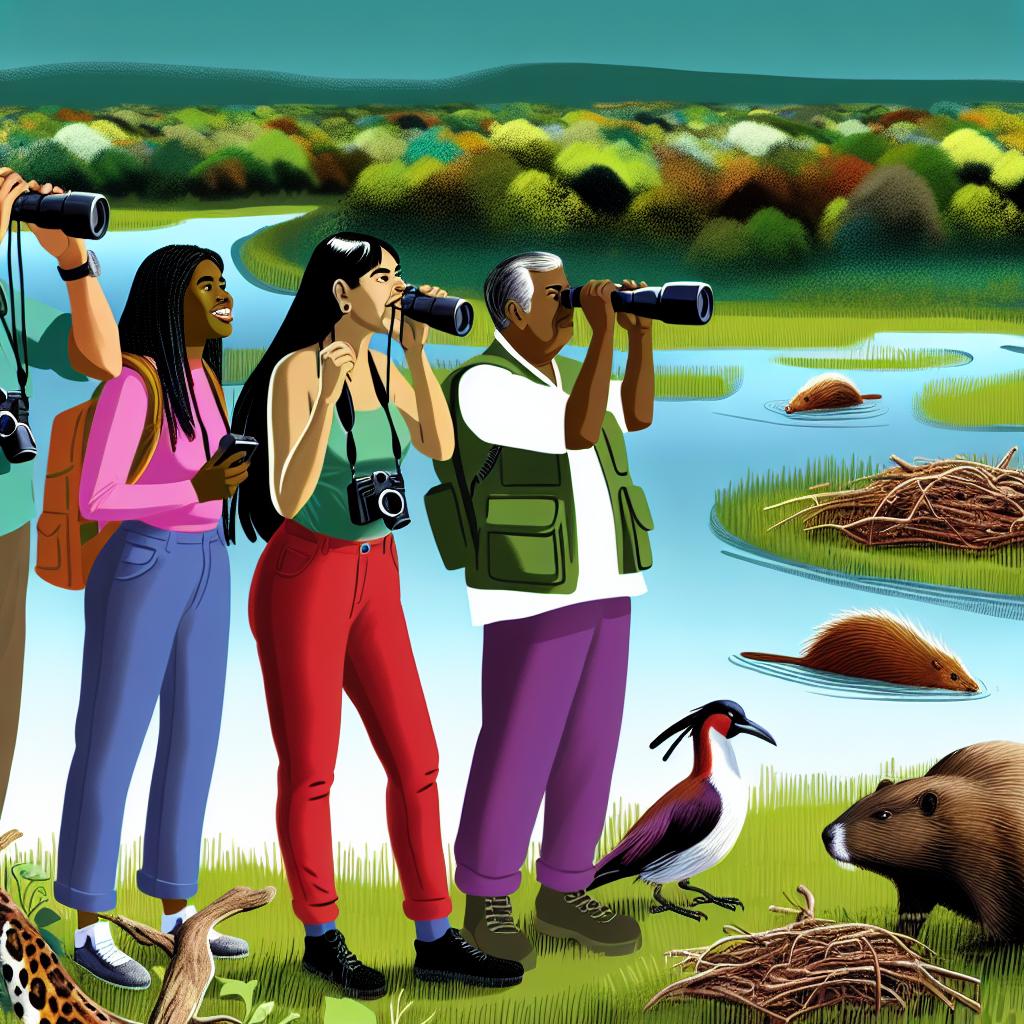
Rewildering and Ecotourism: A Sustainable Future?
Understanding Rewildering
Rewildering, often referred to as rewilding, is an influential conservation technique aiming to restore natural ecosystems to their original, uncultivated states. It embodies the process of allowing landscapes to revert to their natural conditions through the reintroduction of native species and fostering natural processes vital for the sustenance of ecosystems. The primary goal of this approach is the creation of self-sustaining environments, requiring minimal human intervention over time. Many rewildering initiatives focus on large-scale projects aiming to reconnect fragmented habitats, which is an essential step towards preserving biodiversity. In the context of increasing environmental challenges, understanding and implementing rewildering becomes a pivotal part of global conservation efforts.
The Role of Megafauna
The reintroduction of megafauna, or large animals such as wolves, bison, and elk, holds a significant place in many rewildering projects. These animals are often referred to as keystone species, meaning their presence and activities are crucial for the maintenance of ecological balance within their environments. Megafauna help control populations of smaller animals. By regulating these populations, they indirectly lead to a more diverse assortment of plant life, supporting a robust and balanced ecosystem. A prime example is the reintroduction of wolves in Yellowstone National Park, which has substantially contributed to ecosystem equilibrium. The wolves’ role as apex predators reduced overgrazing by deer and elk, facilitating forest regeneration and increasing biodiversity.
Impacts on Flora and Fauna
The return of megafauna has cascading effects on both flora and fauna within their habitats. As they help control herbivore populations, flora experiences reduced grazing pressure, resulting in increased plant diversity and biomass. This rejuvenation of vegetation can create new habitats for various species, encouraging further biodiversity. Additionally, the presence of large predators can help regulate mesopredator populations, preventing smaller predators from disrupting the balance of smaller mammals and birds.
Reintroducing Native Plant Species
Rewilding is not limited to fauna; it includes the reintroduction of native plant species to areas where they have been lost or diminished. Native plants often have symbiotic relationships with the local fauna and are crucial for the sustenance of various insect and animal populations. By promoting these plant species, rewildering helps restore ecological networks, decreasing the likelihood of invasive species taking over and further compensating for the losses incurred due to previous habitat fragmentation.
Ecotourism: Complementing Rewildering Efforts
Ecotourism has emerged as a viable way to support conservation efforts by integrating economic incentives with natural area preservation. Defined as responsible travel to natural areas intended to conserve the environment and bolster the well-being of local people, ecotourism offers a potentially supportive role for rewildering. As tourists explore these rejuvenated landscapes, they can play a crucial part in funding conservation projects and contributing to the local economy.
Economic Benefits
Ecotourism’s economic benefits are multi-faceted. It attracts travelers seeking sustainable and immersive experiences in nature, thereby creating jobs and generating income for local communities. From employing local guides and property owners to supporting conservation efforts, ecotourism channels financial resources back into communities. This influx of capital can, in turn, be reinvested into conservation and rewildering projects, contributing to a virtuous cycle of growth and sustainability.
The Role of Local Involvement
Engaging local communities in ecotourism and conservation efforts ensures that the economic benefits are equitably distributed and that locals have a vested interest in the success of these projects. In many instances, indigenous and local knowledge can significantly enhance the effectiveness of conservation strategies, ensuring they are culturally appropriate and sustainable in the long term. Consequently, when communities are active participants in ecotourism, they become allies in the struggle to maintain ecological balance and protect biodiversity.
Challenges and Criticisms
While the benefits of combining ecotourism with rewildering efforts are significant, these activities are not without challenges. One primary concern is the potential for environmental degradation resulting from increased human activity. Without careful management, tourism can lead to habitat destruction, pollution, and the disturbance of wildlife. Therefore, it is crucial for stakeholders involved in ecotourism to implement stringent guidelines and best practices to minimize negative impacts.
Finding a Balance
Effective collaboration among governments, non-governmental organizations, local communities, and the tourism industry is imperative to maximizing the positive outcomes of ecotourism. Collaboration can foster regulations and policies that safeguard natural habitats while allowing eco-friendly tourism activities. Moreover, educational initiatives can play an essential role in informing tourists about the importance of conservation and responsible behavior in natural settings.
Collaboration and Education
The synergy between stakeholders is crucial to ensuring that ecotourism complements rewildering efforts effectively. Governments, local communities, conservation organizations, and the tourism industry need to work in concert to achieve sustainable outcomes. Educating tourists about conservation importance underscores the need for responsible behavior in natural settings. Guided tours, led by trained locals, can further ensure visitors respect and protect the natural habitats they explore, fostering a culture of conservation-minded tourism.
A Sustainable Path Forward
Rewildering and ecotourism together present a promising path toward sustainable environmental stewardship. When managed with care and foresight, they have the potential to provide ecological, economic, and social benefits. As research and field studies continue to highlight best practices and effective strategies, integrating rewildering with mindful ecotourism presents an opportunity to address numerous challenges threatening global biodiversity and environmental conservation. For those interested in supporting these efforts, seeking out resources offered by conservation organizations or environmental research councils can provide additional insights and avenues for involvement.